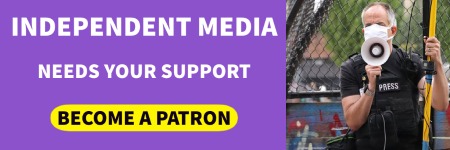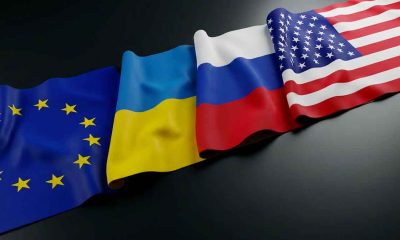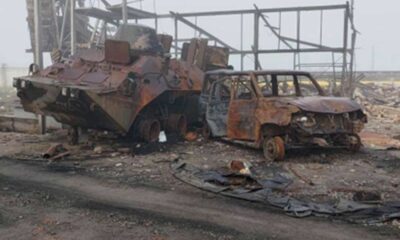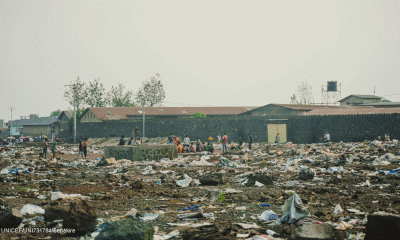Breaking News
Africa’s Invisible 13 Year War in the Democratic Republic of Congo Explodes
M23 rebels and Rwanda troops capture Goma, in a war for control of half of the world’s cobalt supply.
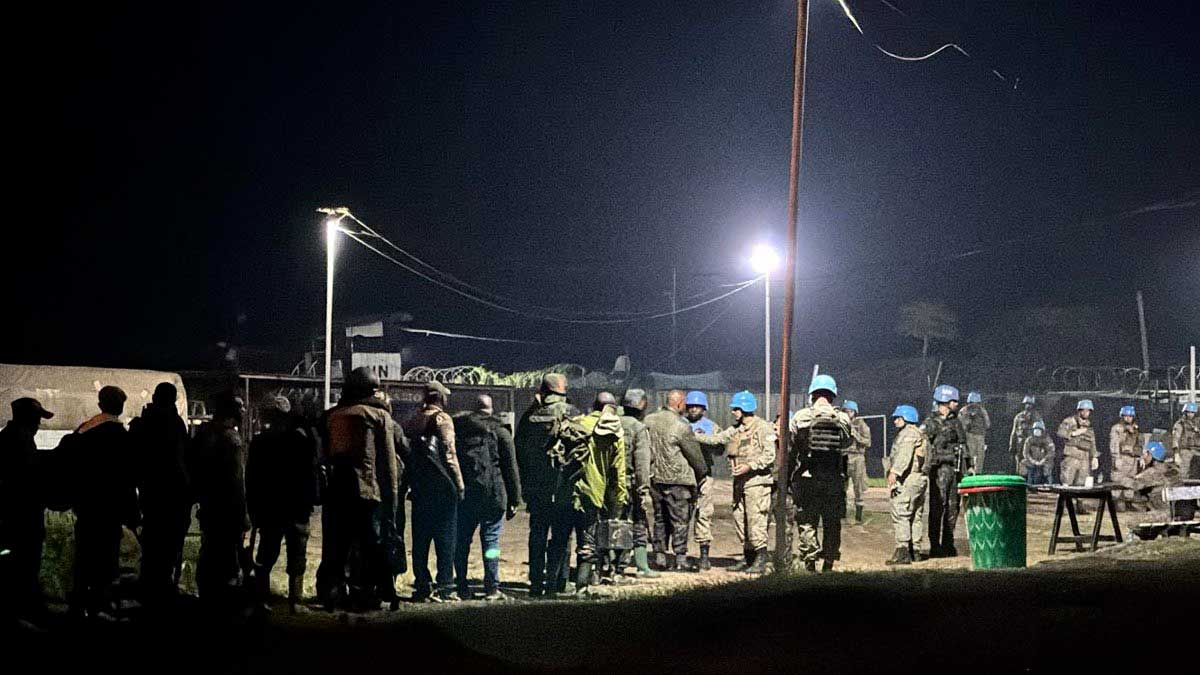
[WBHG News] – The security situation in the Democratic Republic of Congo is rapidly deteriorating as Chinese and Rwandan-backed M23 rebels claim they have captured the regional capital of Goma.
On Saturday, 13 peacekeepers, including nine South African soldiers, were killed and another 11 wounded as fighting raged between M23 and the Congolese Army. Three soldiers attached to the U.N. mission in Congo from Mali and one from Uruguay were among the dead.
Regional leaders in Congo reported over 200 civilians have been killed in the last week, with “hundreds” in hospital.
By Sunday night, M23 rebels, supported by the Rwandan army, had reached the Munigi United Nations Camp on the N2 Highway, just 9 kilometers from the center of Goma and 4 kilometers from the international airport. Their leaders vowed they would have full control of the city within the next 48 hours and issued an ultimatum to the Congolese Army to lay down their arms.
Hours later, M23 leaders claimed they had captured the city, with videos showing M23 militants or Rwandan soldiers marching through empty streets. The Uruguayan National Army released photos of Congolese soldiers lined up to surrender their weapons to U.N. peacekeeping forces.
Earlier in the day, panicked residents of the Kanyaruchinya Refugee Camp were fleeing south on foot deeper into Goma. The sound of gunfire and artillery could be heard within the city, with the United Nations declaring there was a “mass panic.”
Diplomatic Efforts
On Saturday, the DRC severed all diplomatic ties with Rwanda and recalled its entire diplomatic staff “with immediate effect.”
Rwanda’s Foreign Minister, Olivier Nduhungirehe, told the Associated Press that Kinshasa made a unilateral decision “that was even published on social media before being sent to our embassy.”
In an emergency session of the United Nations Security Council on Sunday, the DRC ambassador to the U.N. accused Rwanda of sending their forces over the border, calling it equal to a “declaration of war” and demanded sanctions be placed. Rwanda did not deny the claim.
Rwanda’s ambassador to the U.N., Ernest Rwamucyo, accused the body of using its peacekeepers in the conflict and plotting to force “regime change” in Rwanda.
Last year, Kigali confirmed that it had troops and air defense systems in eastern Congo as a “safeguard” for its security, citing a provocative build-up by the Congolese Army. The U.N. estimates that there are 4,000 Rwandan soldiers, equal to a brigade, in the Congo.
The U.N. announced it was “temporarily relocating non-essential staff from Goma” but would continue its mission. During the Security Council session, the U.N. Special Representative for Congo said the staff was now trapped. The International Airport has been closed, and the city is cut off from all sides, with Lake Kivu to the south and Rwandan and M23 forces to the east and north.
U.N. Secretary-General Antonio Guterres called on Rwandan forces to withdraw and for Rwanda to end its support of M23 rebels. Gueterres’ spokesperson, Stephane Dujarric, said through a statement that the Secretary-General “reiterates his strongest condemnation of the M23 armed group’s ongoing offensive and advances towards Goma in North Kivu with the support of the Rwanda Defence Forces.”
The Security Council showed extremely rare unity, with Vassily Nebenzia, the Russian permanent ambassador to the U.N., calling for “an immediate cessation of hostilities, and [I] urge Rwanda and the DRC to return to the negotiating table under Angolan mediation.”
Nebenzia also condemned the DRC’s support of the ethnic Hutu Democratic Forces for the Liberation of Rwanda (FDLR), a rebel faction that includes perpetrators of the 1994 Rwandan Genocide within its leadership.
China, however, was muted in its response.
South Africa’s U.N. ambassador, Mathu Joyini, condemned the death of nine of their peacekeepers and blamed M23. “Nine of these fallen peacekeepers are South Africans who showed immense bravery amidst relentless attacks from the M23,” Joyini told the council. “These attacks from the M23 are in violation of the ceasefire that was brokered through the Luanda Process…We deplore these unwarranted attacks against [U.N. peacekeepers] and the Southern African Development Community Mission in the DRC (SAMIDRC).”
The acting U.S. Ambassador warned Rwanda that Washington would “consider all tools at its disposal” to hold those responsible for continuing the conflict. French officials also appealed for Rwanda to withdraw its forces immediately and end its support of M23.
Last week, Turkish President Recep Tayyip Erdoğan, speaking with his Rwandan counterpart Paul Kagame in Ankara, said he was prepared to serve as a mediator to end the conflict. Kagame praised Erdoğan, citing his “mediating role in various conflicts, bringing Somalia and Ethiopia together.”
Over the last 25 years, Türkiye has significantly expanded its sphere of influence in Africa, with major economic, diplomatic, and military support activities in Libya, Algeria, Somalia, Ethiopia, Nigeria, Ghana, Kenya, Senegal, and Rwanda. Additionally, Türkiye almost tripled its diplomatic presence on the continent, opening 32 new embassies since 2002, and established its largest overseas military base in Mogadishu, Somalia.
Historical Context
War, genocide, violence, natural disasters, and food insecurity have ravaged Rwanda and the DRC for over 30 years. Last year, the Internal Displacement Monitoring Centre reported over 25 million people in the DRC, “approximately one-quarter of the population, are facing conflict, violence, and disasters” due to 25 years of unrest. An estimated 6 million people have died from non-natural causes during the same period.
Local U.N. representatives estimate over 400,000 people have been internally displaced in the Goma region since January 1.
The current conflict in the eastern DRC is partially rooted in the Rwandan genocide of 1994, when the Hutu majority, led by Théoneste Bagosora, killed up to one million ethnic Tutsis and moderate Hutu supporters in just 100 days. Another 250,000 to 500,000 Tutsi women were sexually assaulted.
Since 2009, Rwanda and elements within the DRC have used the genocide as an excuse to back ethnic Tutsi forces, claiming that the threat from ethnic Hutus remains. Within Rwanda, ethnic Tutsi rebels with the FDLR are backed by Congo as a destabilizing force. The group is small and has little political power.
Tutsis are more integrated into political power structures in the DRC and, to a lesser extent, Uganda. Regional experts estimate that M23 only has 5,000 fighters.
M23 was formed in 2012 and took control of Goma in June of the same year. The non-governmental rebels withdrew after significant international pressure was placed on Rwanda, but fighting between almost 100 different factions has never stopped.
In July 2024, Rwanda and the DRC signed a formal ceasefire, which was to take effect in August. Fighting only stopped briefly and continued to escalate through the fall. On December 15, Kigali and Kinshasa canceled plans to renew talks.
Military Support and International Presence
Rwanda’s military is backed by the BRICS nations of Brazil, China, and India and receives additional weapons and ammunition support from Serbia and Türkiye. Despite the oppositional position of the Russian Federation in the U.N. Security Council, Rwanda also receives support from several African nations in the Sahel, including the Central African Republic and Mali.
Open-source intelligence shows that China is arming M23, with Rwanda serving as the intermediary. Beijing and Kigali have repeatedly denied the claims, but pictures and videos of M23 forces show they are well-equipped with Chinese kit and weapons.
Egypt, Brazil, China, France, and Türkiye support the DRC’s military, although most heavy weapons were purchased before 2010. Up until 2014, Ukraine was the largest arms supplier to the Congo, selling mostly second-hand Soviet-era tanks and armored vehicles. The DRC also received limited support from several European nations, including Spain, Portugal, Belgium, and the United Kingdom.
Up to 1,000 Russian mercenaries, including elements of the Rosgvardiya Afrika Corps (formerly PMC Wagner Group), are stationed in the DRC. However, there is no evidence that they are engaged in direct fighting against M23 and their Rwandan Army backers.
The U.N. Stabilization Mission in the Democratic Republic of the Congo has an estimated 16,000 foreign peacekeepers on the ground and another 2,500 administrative and support personnel.
The Southern African Development Community formed SAMIDRC in December 2023 in support of the U.N. Currently, a regional force of 2,900 peacekeepers from Malawi, South Africa, and the United Republic of Tanzania are deployed.
The Humanitarian Crisis
The DRC is roughly the size of Western Europe and is one of the most mineral-rich nations on the planet. Despite being in the Sub-Sahara, it has significant forests, water, and hydropower resources. The nation has direct access to the Atlantic Ocean, and its main port is located in Banana.
Despite the material wealth and water resources, the DRC is the third poorest nation in Africa by GDP Purchasing Power Parity, only ahead of the Central African Republic and Burundi. In 2022, the U.N. reported that 60% of the population lives on less than $1.90 per day.
According to the IPC, over 3 million Congolese, mostly in refugee camps in the east, are on the brink of famine, and the entire population of almost 100 million suffers from some degree of food insecurity.
M23 and their Rwandan military backers and the Congolese Army have both been accused of human rights violations and atrocities since fighting erupted in 2012. International Humanitarian Law violations have included looting, sexual violence, extrajudicial executions, the intentional targeting of civilians and civilian infrastructure, forced conscription, and the use of child soldiers.
A Proxy War for the Largest Cobalt Deposits in the World
Congo’s mineral wealth includes large deposits of tantalum, gold, and high-grade copper ore. The country also has commercially viable deposits of lithium and diamonds and proven oil reserves of 180 million barrels. However, the most valuable resource within the DRC is cobalt, where almost half of the known global reserves are located.
Cobalt is a critical element for the production of many common items, including polish, dyes, alloys, and car airbags. However, over the past 15 years, demand has exploded due to its importance in the production of rechargeable Lithium-ion batteries used by electric vehicles, electronics, and cell phones. According to public records compiled by the U.N., in 2024, Rwanda exported more cobalt ore than it produced.
Some have accused the European Union of complicity in the conflict after Brussels signed a “Memorandum of Understanding of Sustainable Raw Material Value Chains” with Rwanda in February 2024. Beyond cobalt, the agreement declared that Rwanda “is a major player in [sic] the world’s tantalum extraction” and that “a tantalum refinery will soon be operational.”
The document added that the partnership would “contribute to ensuring a sustainable supply of…especially critical raw materials, as an essential prerequisite for delivering on green and clean energy objectives.”
Tantalum is a critical mineral for the production of small capacitors, which are found in many electronic devices, including computers and cell phones.
Across the border in the DRC, China controls almost all of the cobalt mining interests. In a 2024 report for the Strategic Studies Institute of the U.S. Army War College, Farrell Gregory and Paul J. Milas concluded, “The DRC produces 80% of the world’s cobalt, and Chinese state-owned enterprises and policy banks control 80% of the total output.”
Nine of the ten largest cobalt mines in the world are in the DRC, and five of them are owned by Chinese companies.
Today, almost 80% of the world’s refined cobalt is used to produce rechargeable batteries. China consumes about one-third of the global supply, with Tesla and Volkswagen Group among the largest customers. North America (Canada, United States, Mexico) is in second place, using approximately 23%, followed by Europe, which consumes approximately 18% of global production.
With M23 and Rwanda now in control of Goma, Africa’s longest continuous conflict has no end in sight.
Photo credit – the National Army of Uruguay

